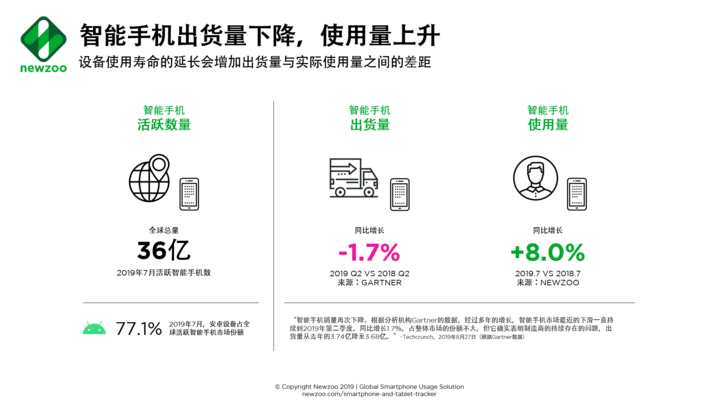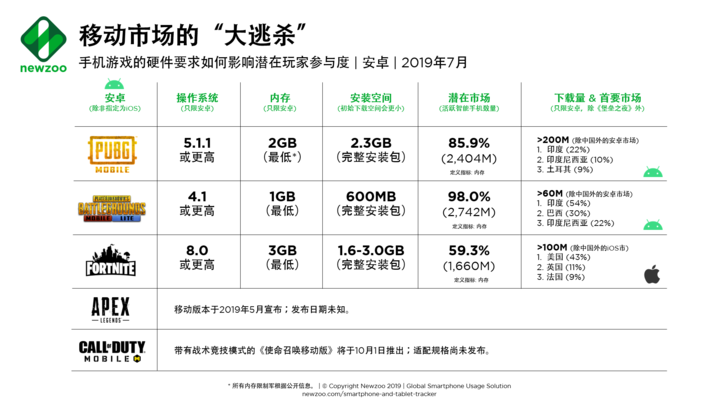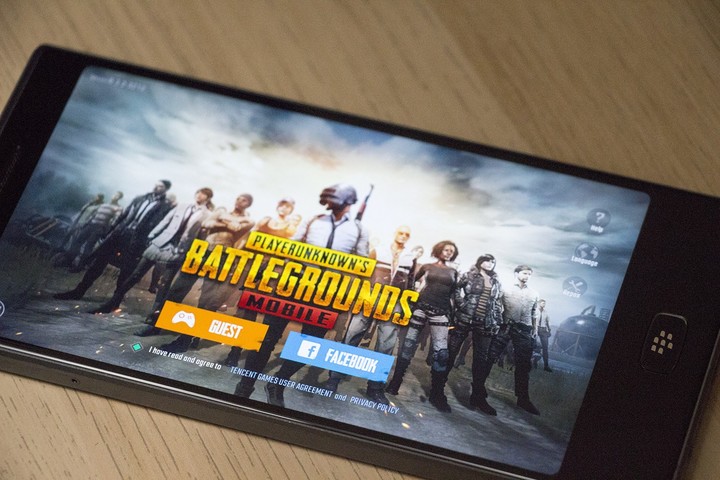The growth dilemma of the smartphone market began at the end of 2017, and the potential market is becoming less and less. The most influential ones are those mobile phone manufacturers that sell equipment.
But the decline in equipment shipments is not the same as the downturn in the entire market.
Research institute Newzoo pointed out in a recent report that over the past 12 months, there have been more than 270 million new active smartphones worldwide As of July 2019, the number of active smartphones worldwide exceeded 3.6 billion, an increase of 8% year-on-year.

Why do the data for “shipment” and “usage” differ? One of the reasons is the extension of the product life cycle. The report pointed out that at present, whether it is a flagship machine or a low-end model, although some new improvements can be seen every year, it is still difficult to stimulate people’s desire to purchase, and the equipment upgrade cycle is gradually increasing.
The mobile phone is not sold. The most direct impact is undoubtedly the company that makes mobile phones. However, for software developers and game publishers, the “shipping volume” data does not objectively reflect the current market conditions, but instead Data such as “number of use” and “active user amount” are the key.
After all, even if consumers no longer upgrade their phones more frequently, they still use various services in their mobile phones, such as watching videos and playing games.
Newzoo also pointed out in the report that in order to allow their own applications to reach more regions, many companies have launched lightweight applications such as Uber Lite and Booking Lite. Mainly for emerging markets such as India, Indonesia and Brazil.
This is because the user equipment configuration in emerging markets is still quite different from the mature market. The existence of the lightweight version allows the low-end mobile phone users to use the latest without replacing the hardware. service.
For example, the overseas simplified version of “Peace Survival” “PUBG Mobile Lite”, the total installation size of the Lite version is only 600MB, while the standard version is about 2GB; in addition, the “Jesus Survival” standard version needs to be stored in more than 2GB. The device is running (in fact, 1.5GB is also available), while the minimum storage requirement for the Lite version is only 1GB.

In contrast, another hot competitive game, Fortress Night, will focus more on mature markets in Europe and America, as paying players in these countries will also have a higher percentage.
On iOS, the game requires iOS11, iPhone 6 and above, and Android requires at least 3GB of storage and Android 8.1 or higher.

Different configuration requirements ultimately lead to different market coverage. Newzoo found through the tracker that Android smartphones that can effectively run the Jedi Survival game in the world are nearly 750 million more than Fortress Night.
Overall, 98% of active Android devices worldwide can run a simplification of Jedi Survival, 85.9% can run the standard version of Jedi Survival, and only 59.3% can run Fortress Night.
Although past views have argued that the development of emerging markets is not enough to fill the gap in growth. But if the coverage market continues to expand and caters to the local audience, developers can still reap the benefits of paying players from emerging markets.
 < /p>
< /p>
In addition, as of July 2019, the number of active Android smartphones with 3GB of storage in Southeast Asia has reached 142 million units. This figure has increased by 36 million units compared to 12 months ago, which is also an important consideration for developers who want to promote their games in emerging markets.
Source of the title: “PUBG Mobile”